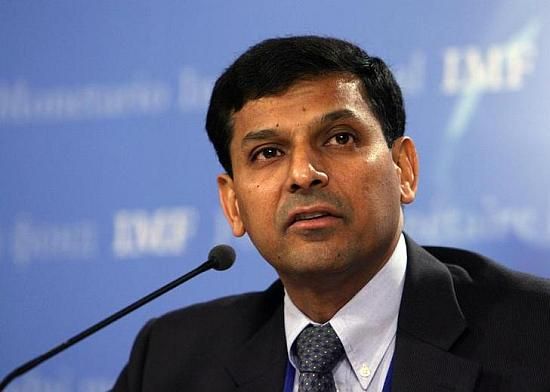 New Reserve Bank of India chief Raghuram Rajan makes his first monetary policy statement on Friday with expectations he may scale back some of the emergency measures that have helped the rupee bounce from a record low.
New Reserve Bank of India chief Raghuram Rajan makes his first monetary policy statement on Friday with expectations he may scale back some of the emergency measures that have helped the rupee bounce from a record low.
But in a reflection of the policy challenges faced by the former IMF chief economist who has been dubbed "The Guv" by the Indian media, Rajan is likely to strike a hawkish tone on inflation.
With price pressures rising but economic growth running at a decade low, Rajan must find a fine balance in central bank policies to support economic activity without adding fuel to inflation and giving investors fresh reason to sell the currency.
"There is a change of guard, so we don't know what the flavour will be, but Rajan is likely to be hawkish and reiterate the importance of low and stable inflation for sustained economic recovery," said Rajeev Malik, senior economist at CLSA in Singapore.
Famed for predicting the global financial crisis, Rajan took office at the Reserve Bank of India (RBI) on September 4 as India was confronting its biggest economic crisis since 1991 and wowed central bank-watchers with an action plan on his first day.
Since hitting a record low on August 28, marking up losses of about 20 percent for the year, the rupee has strengthened by 9 per cent.
Rajan, 50, pushed back his maiden policy review by two days and will now follow the pivotal meeting of the U.S. Federal Reserve, which later on Wednesday is widely expected to announce a winding down of its extraordinary monetary stimulus.
Investor concern that India and other emerging markets will see reduced capital inflows once the Fed trims its stimulus programme has been a major factor in the rupee's slump. India was seen as more vulnerable than many emerging markets because it is running hefty current account and fiscal deficits.
Absent shock waves from the Fed meeting, economists expect at most a partial rollback on Friday of the slate of measures implemented by Rajan and his predecessor to support the rupee, which had the side affect of stifling credit.
With wholesale inflation at a six-month high in August, he is likely to keep the repo rate, the RBI's official policy rate, on hold at 7.25 per cent.
Some economists expect Rajan to build the case for shifting the central bank's key inflation measure to the consumer price index from the wholesale price index.
That would put India in tune with other major economies but would also reinforce a near-term hawkish stance given that consumer inflation has been consistently high, registering 9.52
In his first-day press conference, Rajan spoke of the need for communication and a "clear framework" as to where the central bank is headed.
"We need a more comprehensive policy statement from the RBI underlining the outlook on inflation and guidance around the future of monetary policy framework, especially with regards to inflation targeting," said Gaurav Kapur, senior economist at Royal Bank of Scotland.
DE FACTO POLICY RATE
Rajan is widely expected to leave the marginal standing facility (MSF) unchanged, a Reuters poll shows. The overnight rate is generally viewed as the central bank's effective policy rate now, since it is the major interest rate tool being used to support the rupee.
The central bank jacked it up by 200 basis points in July to 10.25 per cent so that it stood 300 basis points above the official policy repo rate, aiming to tighten market liquidity and make it more expensive to speculate against the rupee.
Still, A. Prasanna, economist at ICICI Securities Primary Dealership Ltd in Mumbai, said it was a 50/50 call as to whether Rajan cuts the MSF to 9.25 per cent.
"If the governor cuts MSF he wouldn't want to give an impression that it is the start of further cuts or that we will go back to 7.25 per cent and so on. Thus he has to guide markets that 7.25 per cent is not coming back soon and further easing will be calibrated and data-dependent," he said.
Several economists expect Rajan to reverse some of the other rupee-supporting steps.
He might relax a requirement that banks meet 99 percent of their cash reserve ratio on a daily basis. The minimum was increased from 70 per cent previously, which drained liquidity from money markets but also choked off credit.
Rajan took over at the RBI with what many observers warned were impossibly high expectations given the difficulty of revitalising an economy whose record-high current account deficit makes it especially vulnerable to an exodus of foreign fund flows, especially if the Fed tapers its stimulus programme.
Additionally, the weak coalition government of Prime Minister Manmohan Singh has had difficulty pushing through policy reforms, and with national elections due by May, little economic reform is expected in the near term.
Several RBI-watchers said the rupee, at 63.25 to the dollar on Wednesday, is not yet out of the woods and that it would be premature to wind back significantly the support measures.




.jpg)







 © 2025
© 2025